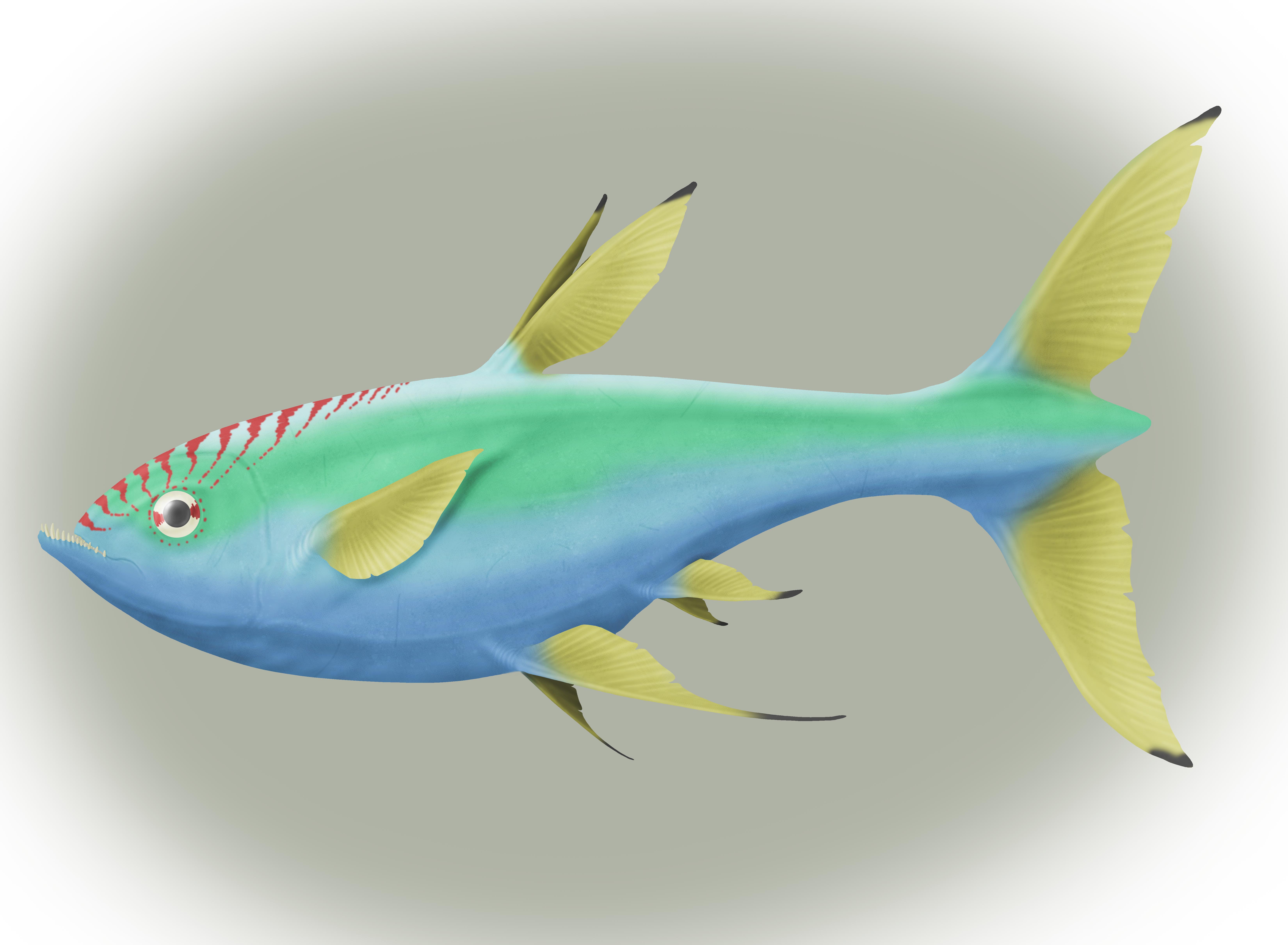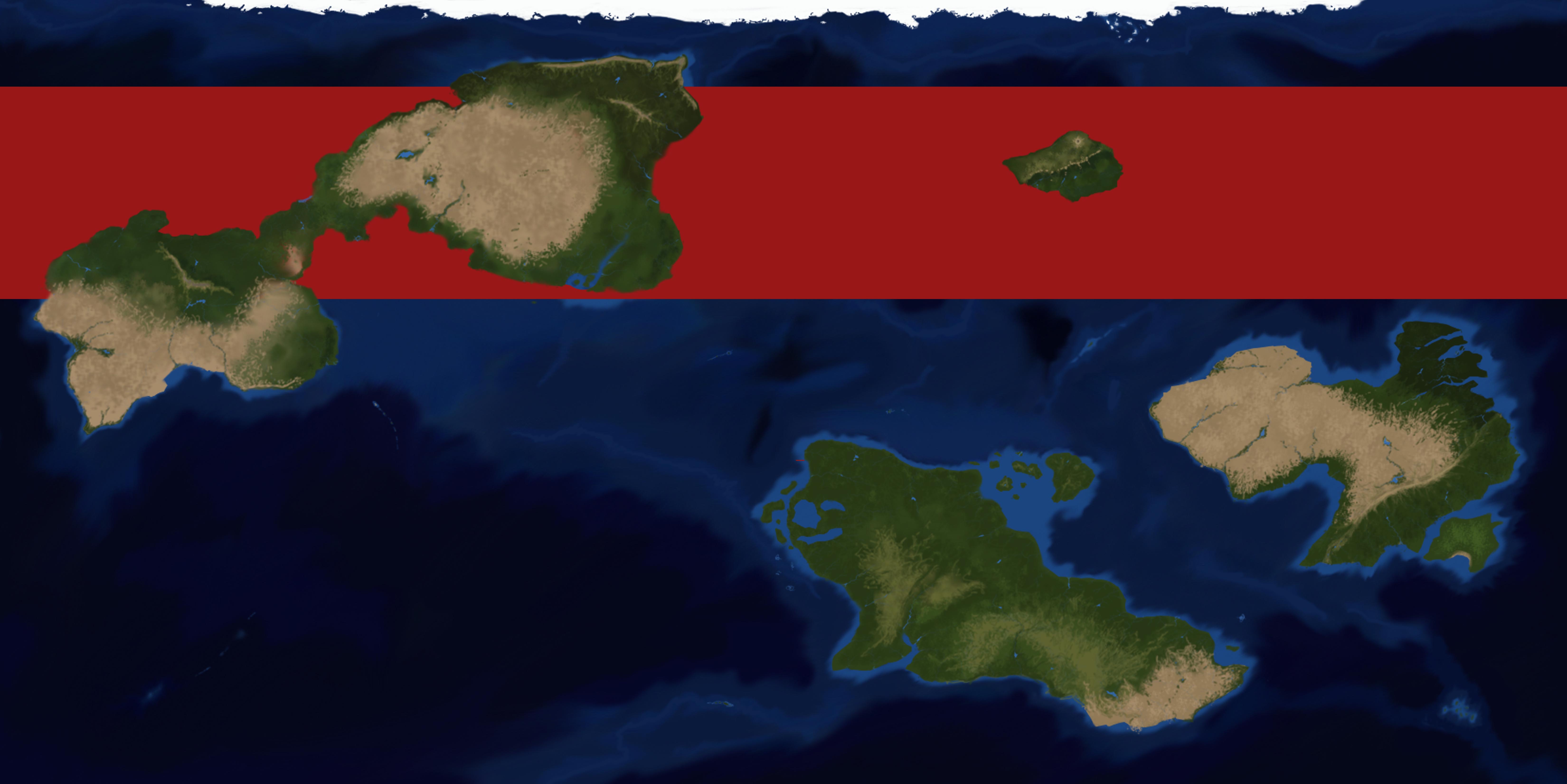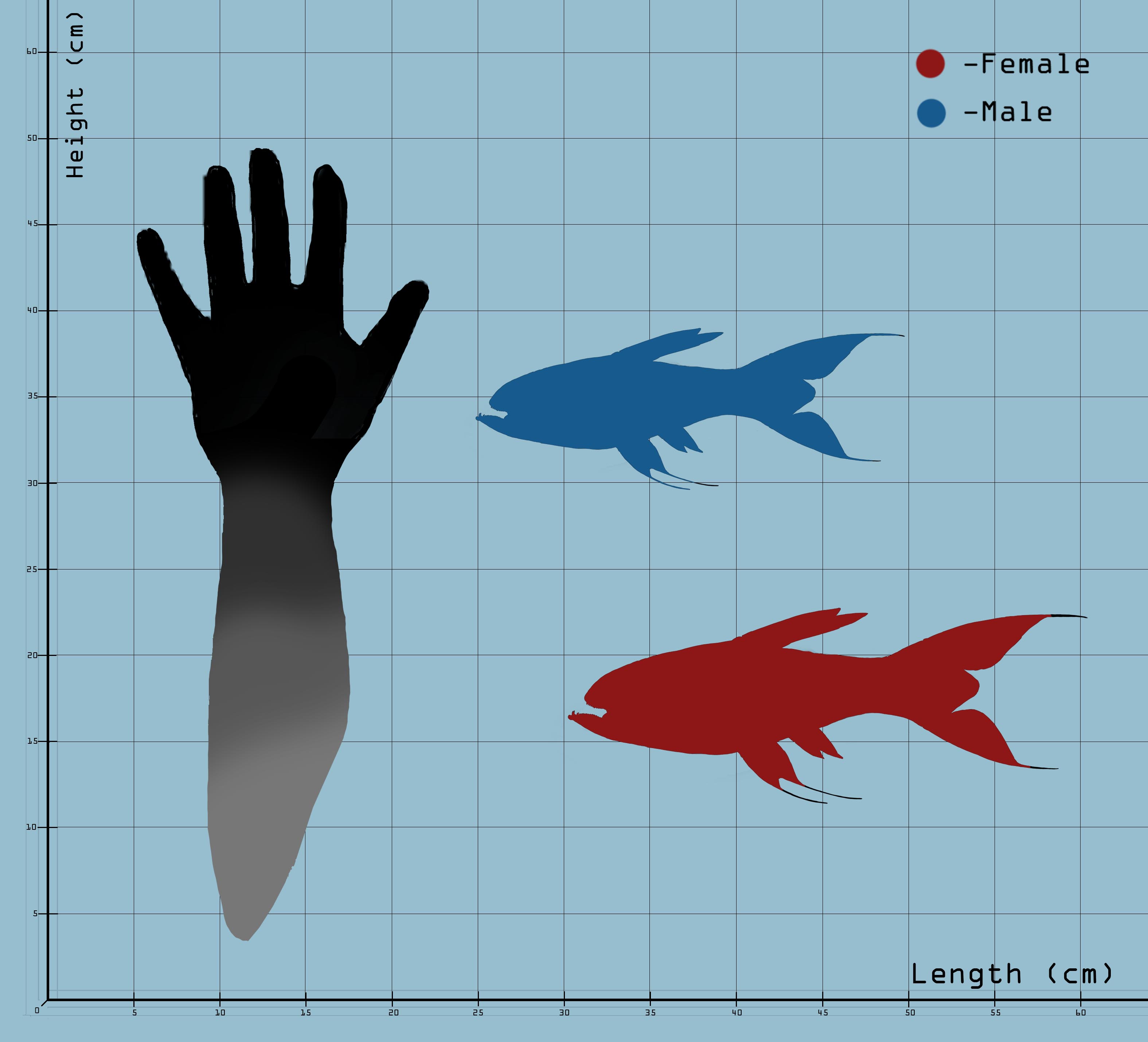Student Yanese Flapper
Tachýsichthýs pelagikós is a Baso-Esavelid amphibian and the most common species of Yanese Flapper on the planet; it is also one of the most exploited animals for human consumption.
Found living from the northern Tropical belt to the west Jano-Blathànna Ocean in enormous schools, this amphibian is a common sight in many diving tours in the area.
T. pelagikós is easily identifiable by its peculiar teeth arrangement, made for crushing the hard shells of the various plants and invertebrate it feeds on; the front pair of teeth in the jaw, however, are used exclusively in fights between conspecifics both for mating priorities and in socialization behaviours.
It is also worth to note that the colour patterns, as well as some other characteristics, vary between western and eastern populations, creating the two subspecies: T. pelagikós pelagikós and T. pelagikós borealis.
The populations of this animal continuously adapt to the rate at which humans fish it, meaning that even if human activity has increased over time, the amphibian adjusted its birth rates accordingly.
This remarkable change is due by two major factors, being the extreme adaptability coming from its low place in the food chain and the accelerated evolutionary processes that are in place on the planet as a whole.
This amphibian is commonly consumed raw by the Yanese people or is an ingredient in amphibian stews.
Basic Information
Anatomy
- Cranium slightly elongated with a rounded snout; eye moderately big compared to the cranium.
- Jaw longer than the maxilla; incisors of the jaw bigger and thicker, innermost teeth flat.
- Sphaera Lania has very subtle edges.
- Cranial armor Euabsorbed.
- Fins coupled, long and thin.
- Gill tail long and smoothly attached to the body with no major drop.
- Large Gill fan with high ridges and caudal drop; both caudal fins are well developed.
Genetics and Reproduction
Polygynous species.
Both males and females enter an active state once every month for a duration of around seven to nine days.
Active males display heightened aggressiveness, fins glowing bright yellow, a red circlet around the eye and swollen glowing bright red parapeni; active females have few indicators of their in-heat state, outside of some markers in the underbelly.
Several males will mate with a single female; mating priority is decided in male fights, where the winner gets to climb in the mating hierarchy.
The females will incubate the eggs inside the duct for a full week after the mating season's end, laying them in floating forests or shallow water reefs.
The eggs, once laid, will take an additional twelve days to hatch; the newborns will create a new school and will leave the nesting site soon after.
Growth Rate & Stages
Ontogenesis quite marked in the species; the spawns are born with a thin layer of cranial armour, which gets absorbed during the growth process, a eutenic character from their Quadratocephalid ancestry.
Loss of natal aculeus at four weeks of age.
Ecology and Habitats
Epipelagic species found at depths between 10 and 60 m.
They prefer warm open waters with strong currents or shallow calm waters with plenty of sandy open space and occasional reefs.
Dietary Needs and Habits
Omnivorous species that feed mostly on plants with the occasional invertebrate supplement; they've been observed feeding on carrion seldomly.
Biological Cycle
Young T. pelagikós live the first few days of life in the cover of their natal habitat, feeding off of small plant buds and Zoophytoplankton.
They'll leave the area on their own as they grow bigger and need more nutrients to sustain themselves.
Additional Information
Social Structure
Very social animal living in large schools.
Among the various social interactions the species is known for, the male play-fights are among the most famous; often during the day, the males of the group will fight between each other to entertain themselves; during these events females and younger males will congregate to watch and learn from more experienced individuals.
Domestication
Found in many public aquariums in tanks dedicated to shoaling amphibians.
Due to the impractical amount of space requied to keep them in captivity, they are not sold for home aquariums.
Uses, Products & Exploitation
Of very high economic importance both locally an globally, the species is a cornerstone of the Yanese trade, exporting the animal worldwide.
Especially precious in the waters of the Hetherian Ocean, being one of the few safe animals to catch as they don't prey on Cinerichthyds.
Geographic Origin and Distribution
Perception and Sensory Capabilities
Very good eyesight.
Symbiotic and Parasitic organisms
Afflicted by Intestinal Tube Worms and other skin parasites.
Scientific Name
Eoichthyia; Tartarosomnia; Rotunducephalidae; Gladiopinneoidea; Quadratocephaloidea; Selenopiscoidea ; Esavelidae; Tachýsichthýs; T. pelagikós
Lifespan
5 Years
Conservation Status
Least Concern: no measures in place to protect this species
Population Trend: STABLE
Average Weight
300-800 gr
Body Tint, Colouring and Marking
Azure body with aquamarine to green undertones; slightly darker belly.
Red markings in the cranial area create a characteristic red circle around the eye.
Eye is red banded in the mid section.
Fins bright yellow with black tips.
Remove these ads. Join the Worldbuilders Guild












Comments